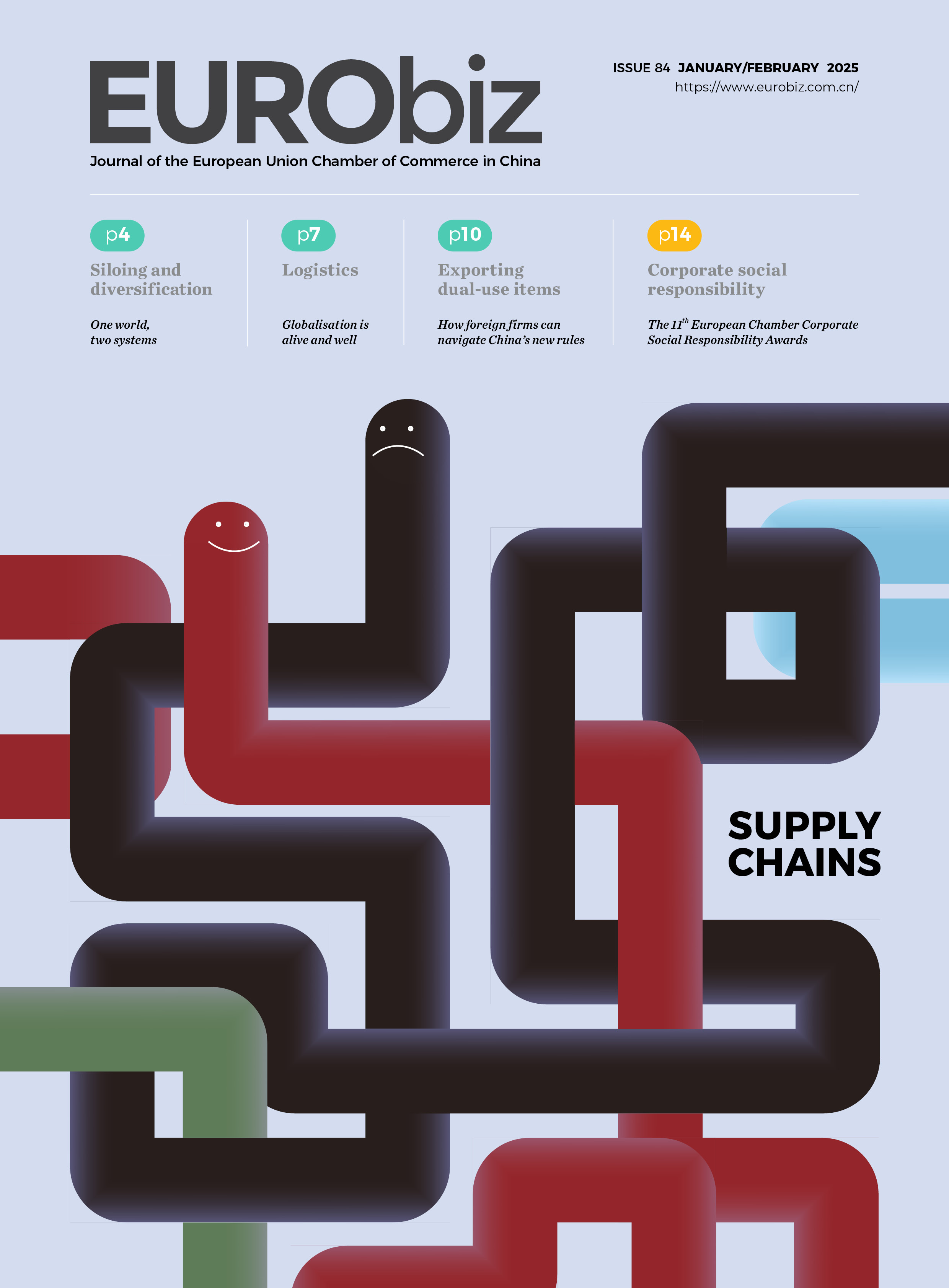
Global supply chains are undergoing a reset, with China at the centre of the shift. According to the European Chamber’s Business Confidence Survey 2024, three quarters of companies have reviewed their supply chains in the past few years, with the majority of respondents making changes as a result.[1] While the Covid-19 pandemic served as a catalyst for this rethink, the trend of European companies in China localising or diversifying supply chains is rooted in deeper structural issues.

China’s dual circulation strategy put the country on course to reduce reliance on the rest of the world through industrial policies that disproportionately support domestic companies. In a bid to remain competitive in the China market, by having their products recognised as ‘made in China’, many European companies have localised their operations—including supply chains—to a point that they are Chinese companies in all but name.
A survey conducted for One World, Two Systems: Siloing and Diversification found that over half of respondents’ companies have undergone a significant level of supply chain localisation.[2] Some attribute this mainly to commercial factors – to compete with Chinese companies on both price and speed, a local supply chain makes sense. However, other companies have taken this a step further—largely in response to regulatory challenges rather than commercial logic—and siloed their supply chains by separating them from the rest of the world. The problem with supply chain siloing, just like other forms of siloing, is that it surrenders global competitiveness by creating an autonomous Chinese subsidiary that neither benefits from nor contributes to the group’s global operations.
At the same time, companies are facing pressure at home to shift supply chains away from relying on a single source – a core facet of the European Union’s (EU’s) derisking strategy. European companies in China are also exposed to global diversification trends, with some markets erecting trade barriers in an attempt to not just reduce reliance on China but eliminate it all together.
This means that just as companies are looking to localise their supply chains in China, they also need to find alternatives to China to supply global markets. The resulting rebalancing may have advantages for long-term supply chain stability but leads to a clear loss of efficiency in other areas. For example, some companies are now forced to exclude United States (US)-made components in products meant for the Chinese market, while they are simultaneously forced to exclude Chinese-made components in products destined for the US.
At first it may appear as though China
is achieving exactly what it set out to do with dual circulation, and that
companies have the most to lose. However, in China’s case, almost as many
companies are choosing to further offshore their supply chains from China as
onshore.[3] Siloing’s biggest downside
is that it leaves the China operations of European firms less integrated
globally and less important to headquarters. The result is a less important
China in a more deglobalised world.
[1] European Business in China Business Confidence Survey 2024, European Union Chamber of Commerce in China, 10th May 2024, viewed 18th December 2024, p. 34, <https://www.europeanchamber.com.cn/en/publications-business-confidence-survey>
[2] One World, Two Systems: Siloing and Diversification, European Union Chamber of Commerce in China, 9th January x2025, viewed 9th January 2025, p. 16, <https://www.europeanchamber.com.cn/en/publications-siloing-diversification>
[3] Three quarters of respondents (76 per cent) have already reviewed their supply chains over the past two years. Of those that are taking action, 18 per cent are further onshoring supply chains into China, with an additional three per cent fully onshoring to ward off the risk of external disruptions to their China operations. A further 12 per cent are diversifying their supply chains by setting up alternative sourcing of supplies outside of China, while maintaining their existing supply chains in the country. Only one per cent are fully shifting current supply chains from China to other markets. European Business in China Business Confidence Survey 2024, European Union Chamber of Commerce in China, 10th May 2024, viewed 18th December 2024, p. 34, <https://www.europeanchamber.com.cn/en/publications-business-confidence-survey>


Recent Comments